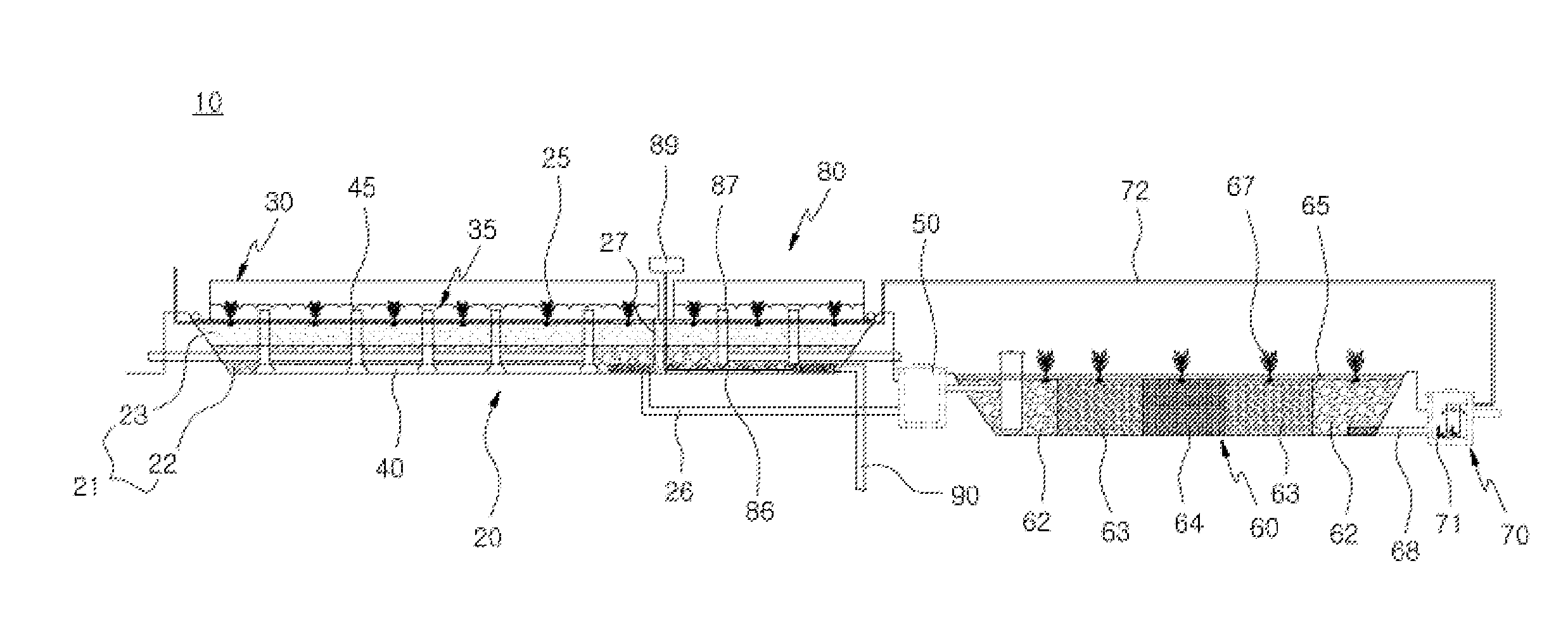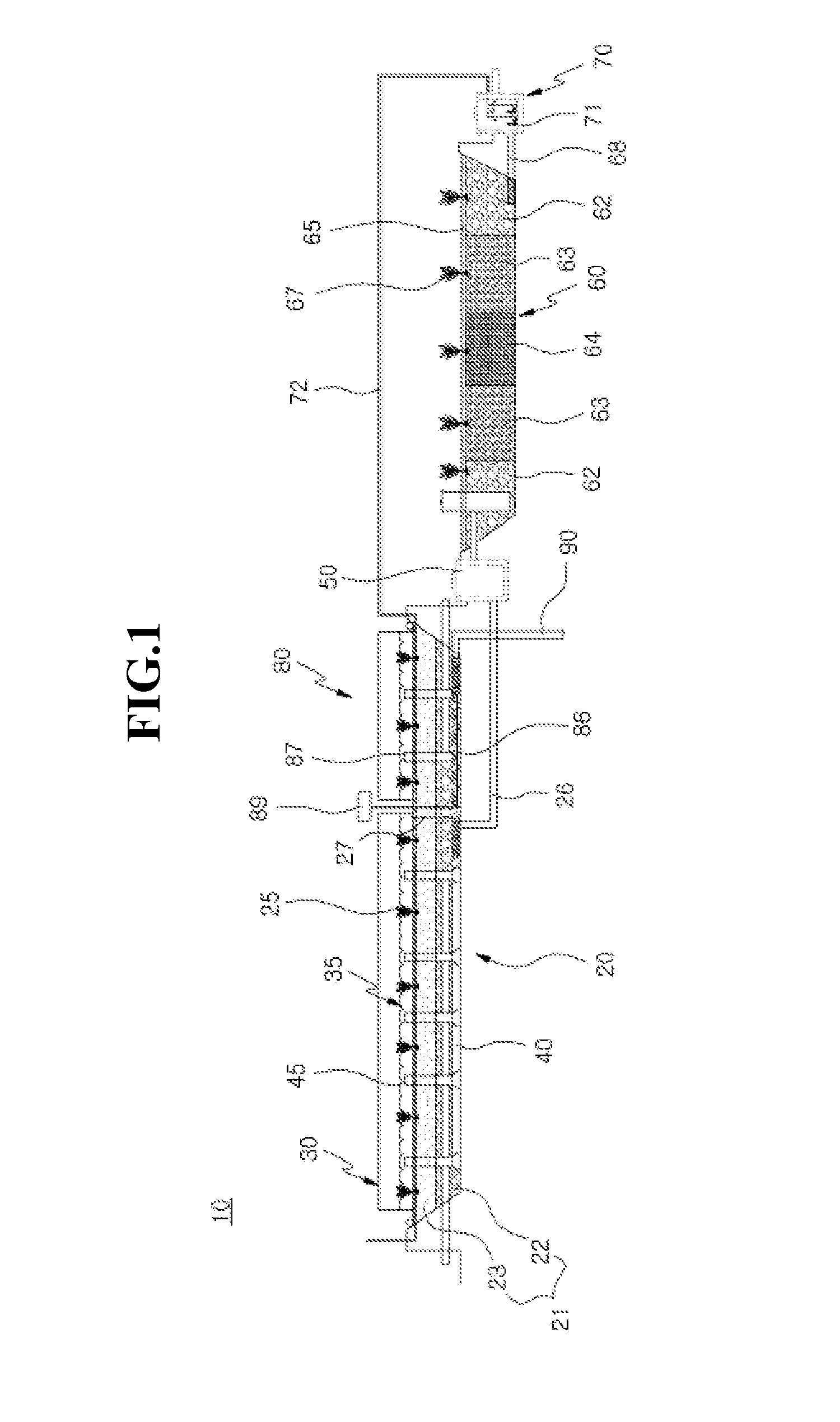Hybrid artificial wetland water purification system, sewage treatment device using same, and natural nonpoint purification device capable of simultaneously purifying river and lake water
a technology of artificial wetland water and purification system, which is applied in the direction of biological water/sewage treatment, separation process, filtration separation, etc., can solve the problems of limiting existing natural purification technologies, low energy, and difficulty in treating high-concentration pollutants and eutrophication materials, so as to improve water quality and improve availability.
- Summary
- Abstract
- Description
- Claims
- Application Information
AI Technical Summary
Benefits of technology
Problems solved by technology
Method used
Image
Examples
first embodiment
[0141]Subsequently, sewage introduced into the hybrid artificial wetland water purification system 10 is treated while passing through the anaerobic artificial wetland 60 and the second aerobic artificial wetland 80, as described above in the first embodiment, and is discharged through the discharge pipe 90.
second embodiment
[0142]FIG. 7 is a cross-sectional view illustrating a sewage treatment device using a hybrid artificial wetland water purification system according to a third exemplary embodiment of the present invention. In the sewage treatment device according to the current embodiment, an anaerobic artificial wetland may be provided at lower sides of a first aerobic artificial wetland and a second aerobic artificial wetland, and because other configurations of FIG. 7 are substantially the same as those of the invention as described above, descriptions thereof will be omitted.
[0143]As illustrated in FIG. 7, a part of an anaerobic artificial wetland 360 of a hybrid artificial wetland water purification system 310 may be provided at immediately lower sides of the first aerobic artificial wetland 320 and the second aerobic artificial wetland 380.
[0144]Thus, the area that the hybrid artificial wetland water purification system 310 is to be installed can be reduced so that the hybrid artificial wetlan...
PUM
| Property | Measurement | Unit |
|---|---|---|
| height | aaaaa | aaaaa |
| sizes | aaaaa | aaaaa |
| height | aaaaa | aaaaa |
Abstract
Description
Claims
Application Information
 Login to View More
Login to View More - R&D
- Intellectual Property
- Life Sciences
- Materials
- Tech Scout
- Unparalleled Data Quality
- Higher Quality Content
- 60% Fewer Hallucinations
Browse by: Latest US Patents, China's latest patents, Technical Efficacy Thesaurus, Application Domain, Technology Topic, Popular Technical Reports.
© 2025 PatSnap. All rights reserved.Legal|Privacy policy|Modern Slavery Act Transparency Statement|Sitemap|About US| Contact US: help@patsnap.com



